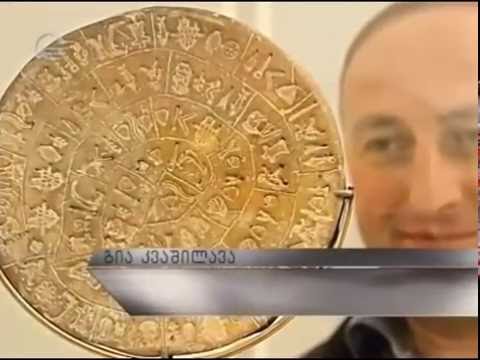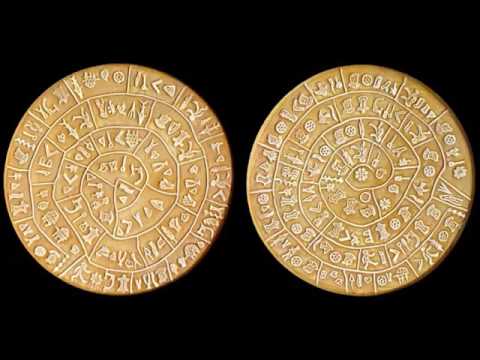ფესტოსის დისკო
The History of the Phaistos Disk The Phaistos Disk (Greek Δίσκος της Φαιστού) was discovered on the 3d of July of 1908 by an Italian archaeologist Luigi Pernier on the island of Crete, in Phaistos _ the town excavated by archaeologists. It was conventionally dated 1850-1600 BC (the Bronze Age, Proto-palatial/Old Palace and Neo-palatial/New Palace periods, middle Minoan IIA-IIIB period); the Disk is a clay plate of 6 inches (approximately 16 cm) in diameter, and weighs 380 grams. On both sides of the Disk, on yet wet clay, 63 composite words are printed in the form of a spiral with 244 golden matrixes of pictorial signs; the Disk was then kilned. There are only 48 distinct pictorial signs that are often imprinted in different angle. The Phaistos Disk is kept in the archaeological museum of Heraklion (Gallery 3, box 41, #EP-1358), the main port of Crete, Greece. http://www.academia.edu/2319833/_2008...

მსგავსი ვიდეოები

tv იმედი. ,,გადაცემა სხვა რაკურსით". 2 გადაცემა. (15 დეკემბე...
დავით თორდია

ფესტოსის დისკო | ტელეპორტალი | 03.06.2023
Ajara TV

გია კვაშილავა - ფესტოსის დისკოზე ამოკითხული საგალობლების თარ...
Ramaz Chachibaia

გია კვაშილავა - ფესტოსის დისკოსა და A კლასის ხაზოვან წარწერე...
Gia Kvashilava

A კლასის ხაზოვანი და ფესტოსის დისკოს წარწერები - Radio Sputn...
Gia Kvashilava

31 . ფესტოსის დისკო - 5 წთ.
Lekso Gelashvili

სენსაციური აღმოჩენა! -- ფესტოსის დისკო
Lekso Gelashvili

უძველესი ქართველური წარწერები - OBIEQTIVI TV, 25.08.2015
Gia Kvashilava